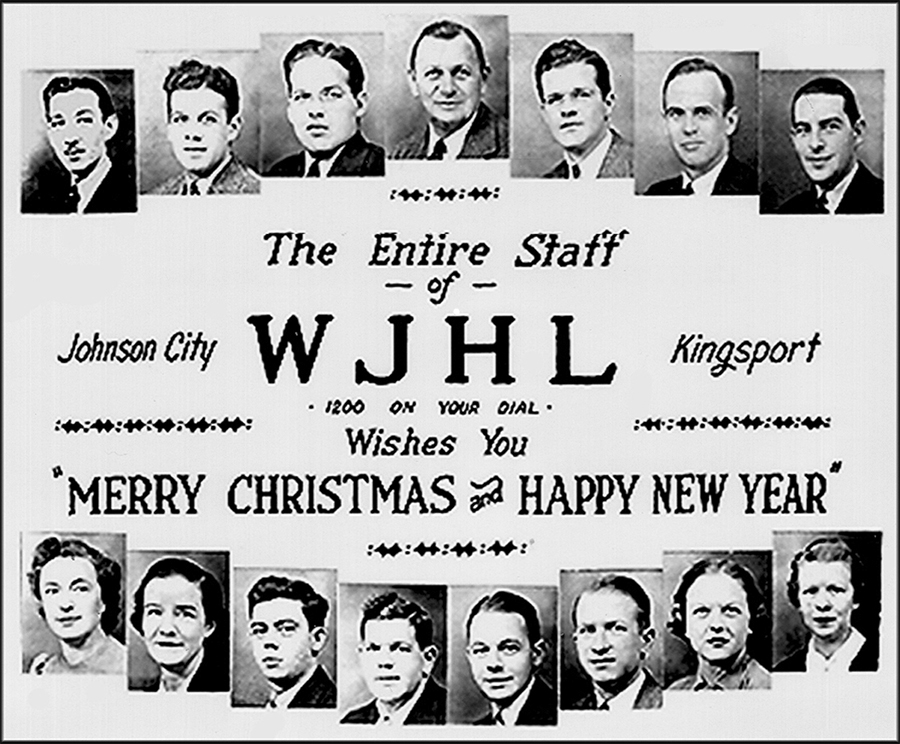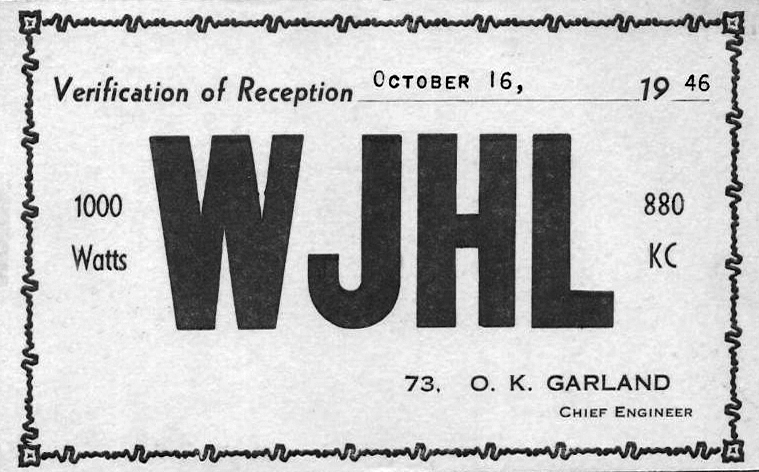In 1940, an unidentified announcer at WJHL radio wanted readers to understand that the idea that all there was to do at a radio station was to put on a record and let it play was erroneous to the extreme. He chose to send a letter to the newspaper educating the public: “Every minute of program material,” he said, “is carefully gone over and finally presented with a definite idea in mind. The purpose of the Program Department is to keep on the air the entertainment that is wanted by the listeners.
“Because there are approximately 350,000 listeners who tune into WJHL, the Program Department had to present a greatly varied program schedule in order to please every one of their listeners as frequently as possible.
“This is done by breaking down into separate units and scheduling as much variety therein as is possible. Yes, there is more popular music on the air than any other one type of entertainment, but that is because it pleases a greater number of people.
“And yet, only about 35 percent of a radio day consists of popular music. Some 20 percent is light classical and concert music while another 15 percent is news. Then comes religious programs and others. Every taste has to be satisfied at some time or another during the day. The more often listeners have available the type of program they like the best, the happier is the Program Department.

Unidentified WJHL Announcers Believed to Have Been in the Late 1930s-40s
“As for records, WJHL seldom uses them; instead, it uses transcriptions, which are vastly different. Here's how the Program Department at WJHL operates. All of the programs that go on the air are handled by this department. Some new idea might not become a program overnight, but given time, it usually works its way into the schedule sooner than later, and that is good.
“First, the idea has to culminate into a program that has a definite appeal to one group of listeners. If it is for the housewife, the idea is then scheduled as a mid-morning program. For the clerk in a store, an early evening program better fits the bill. For the kiddies, a late afternoon time works best. After all ideas are evaluated thoroughly, a program is established, which then requires rehearsals and timing.
“Then there is something else. The program, regardless of how good it is, cannot be scheduled too close to another program of a similar nature. Two programs of the same type of music or two programs of speakers cannot immediately follow one another. There has to be variety for the different listeners in that particular group.
“And so a clear time is picked, one that will not interfere with similar programs, and then the new program is set up on the master schedule from which comes the daily program schedule. Quite simply, however, there are some 69 quarter hours in each radio day. That is a lot of time to fill. Each program has to be timed and checked for program content.
“Then there is a matter of checking and filling all of the 50,000 musical selections, the crosschecking of all of the cards which enabled them to find these selections quickly, the on-going checking on copyrights, the unending search for new talent and the ability to present what the listeners want the most.”

Verification of Reception for the Radio Station in 1946
“If this didn't help clear up in the minds of the listeners what goes on in the Program Department, they were invited to drop in at WJHL any night at a late hour and see for themselves. Meanwhile, the radio station hoped listeners would pay attention and become better acquainted with what was offered in the way of their favorite programs.
“The station was convinced that if the listener knew their station, they would have no trouble in keeping up with the things they liked the most in the way of radio entertainment.”
The announcer concluded his newspaper remarks noting that “WJHL's modernly arranged and equipped office and studio, ranked as one of the best for any city of comparable size in the country.
If you can identify any of the announcers in my column photo, which appears to have been taken in the 1940s, I will post it again with an update of the names I receive. The only person I can recognize is Henry Frick on the top far left. He and Mrs. Frick owned and operated The Music Mart on S. Roan Street for many years. I had the pleasure of working for him for three years.
